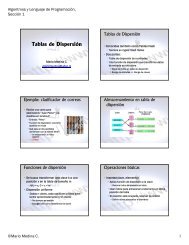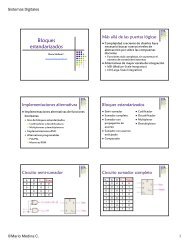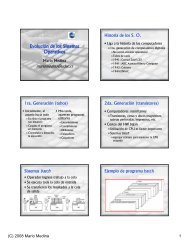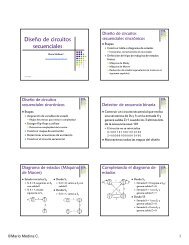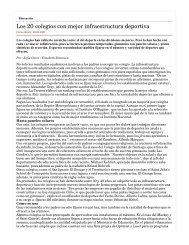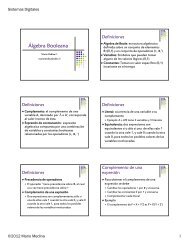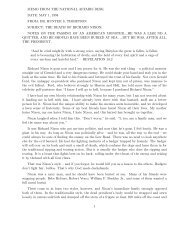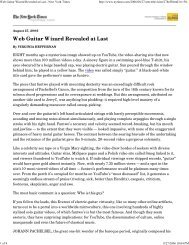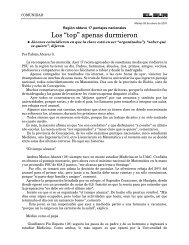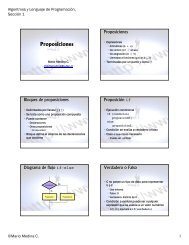A Symbolic Analysis of Relay and Switching Circuits
A Symbolic Analysis of Relay and Switching Circuits
A Symbolic Analysis of Relay and Switching Circuits
Create successful ePaper yourself
Turn your PDF publications into a flip-book with our unique Google optimized e-Paper software.
33<br />
It is easy to sP£w that the sum modulo two obeys the<br />
commutative, asso(}iative, <strong>and</strong> the distrihltive law<br />
with resoect to multiplication, i.e.<br />
x 1<br />
ex 2<br />
: ~exl<br />
(X 1 eX 2 )eX 3<br />
=X 1<br />
8(X 2<br />
eX 3<br />
)<br />
Also:<br />
x el : X'<br />
1 1<br />
Since the sum modulo two obeys the associative law,<br />
we may omit parentheses in a<br />
sum <strong>of</strong> several terms<br />
Without ambiguity_ The sum modulo two <strong>of</strong> the n var1-<br />
ables X 'A ••••X will for convenience be written:<br />
1 2 n<br />
Xlex2ex3···e~<br />
n<br />
=~Xk<br />
Theorem: The two functions <strong>of</strong> n variables which require<br />
the most elements (relay contacts) in a seriesn<br />
n<br />
parallel realization Bre ~X"<strong>and</strong> (~X~)I, each <strong>of</strong> wlUch<br />
requires (3·2 n - 1 _2) elements.<br />
12 1



